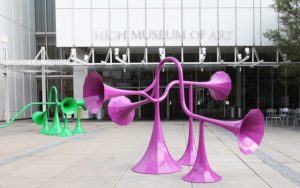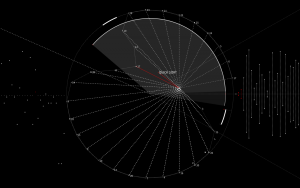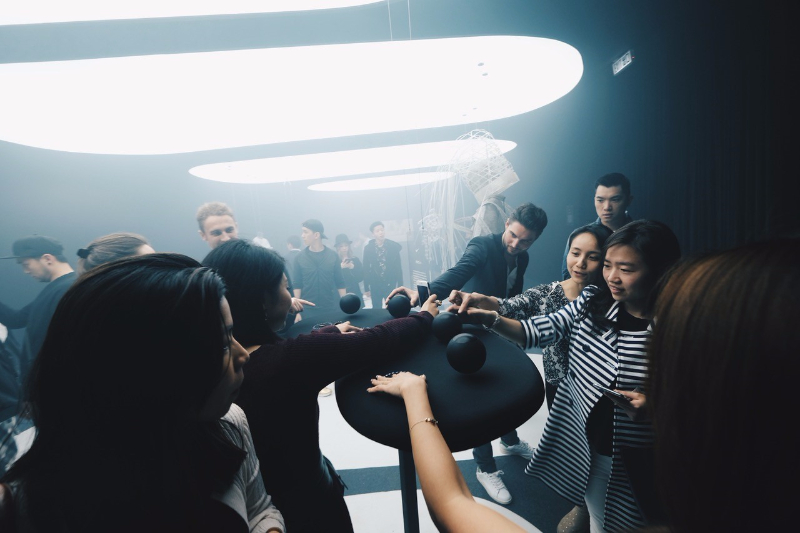
Photo of Šarapovas’ Muscial Scultpure
Artist Andrius Šarapovas’ room-sized, interactive, musical sculpture features 77 individual installations comprised of a metal bar, sound activator, sound damper, resonator, and mechatronics that are used to make generative music. The project consists of 16 notes, C, D, F and G spread across 4 octaves, which are distributed throughout the room so that one can hear different music compositions at different points in the room. A note is made by the project’s algorithm which is activated by the algorithms from the apps on the Tele2’s 4G network. The algorithm for the project uses one second of 4G statistical data to generate one second of music. With multiple phones and installations, this creates a rhythm or musical pattern and sound volume. The pitch is determined by the amount of data that’s being downloaded on the phones. This algorithm seems so simple, yet it’s outcome is amazing. “The probability of the repetition of an identical four-note combination is about once in every 98,304 activations”, Šarapovas explains. What’s so admirable about this project is that the algorithm is very straightforward but the result is so complex and combinatory. You can see the artist’s artistic sensibility through this fact. As it states in the article, “Early on, Šarapovas settled on a minimalist spatial object that would consist of a number of identical segments… to balance the sound, control noises, dampen different notes, and activate sounds”.
![[OLD FALL 2018] 15-104 • Introduction to Computing for Creative Practice](../../../../wp-content/uploads/2020/08/stop-banner.png)



